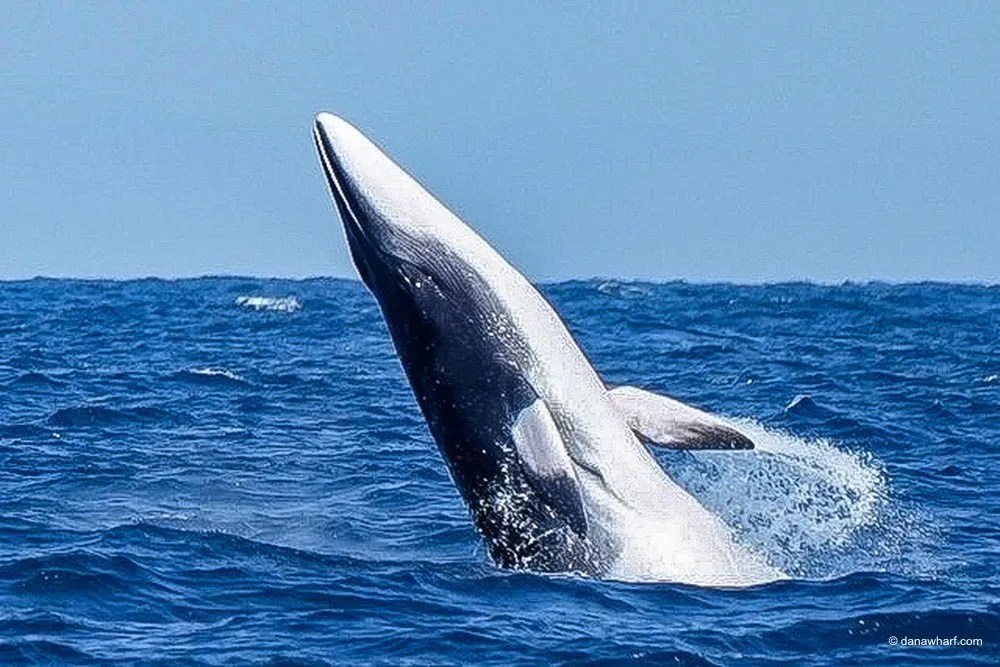The Fascinating World of Minke Whales

Minke whales, members of the baleen whale family, are often called the enigmatic giants of the deep. These magnificent marine mammals are renowned for their elusive nature, remarkable anatomy, and important role in ocean ecosystems. In this article, we delve into the world of minke whales, exploring their anatomy, distribution, feeding habits, social structure, and the conservation challenges they face.
Anatomy of Minke Whales
Size and Weight:
Minke whales, which encompass two primary species, the common minke whale (Balaenoptera acutorostrata) and the Antarctic minke whale (Balaenoptera bonaerensis), are relatively small compared to some other whale species. Common minke whales typically measure between 23 to 26 feet (7 to 8 meters) in length, with females slightly larger than males. In contrast, Antarctic minke whales are slightly bigger, often reaching lengths of up to 35 feet (10.7 meters). Despite their relatively diminutive size, minke whales are lightweight for their proportions, with adults weighing between 5 to 10 tons.
Physical Characteristics:
Minke whales have streamlined bodies, characterized by a pointed snout and a dorsal fin located towards the tail end of their bodies. Their bodies are predominantly dark gray, with a white underside. A diagnostic feature of minke whales is a distinctive white band on each flipper, a trait that aids in their identification.
Distribution and Migration Patterns/Routes
Minke whales are widely distributed across the world’s oceans, inhabiting both polar and temperate regions. Their distribution varies seasonally, as they undertake extensive migrations in search of food. In the summer months, they can be found in colder, high-latitude waters where they feed. During winter, they migrate to warmer, low-latitude waters for breeding and calving.
Feeding Habits and Diet
Minke whales are known for their voracious appetite. They are baleen whales, possessing comb-like baleen plates instead of teeth. These plates enable them to filter-feed on tiny marine organisms, such as krill and small fish. Minke whales engage in lunge-feeding, a feeding strategy where they engulf large mouthfuls of water and prey, expelling the excess water through their baleen plates, trapping the prey for consumption.
Foraging Behavior
Minke whales are agile and swift swimmers, allowing them to pursue and capture their prey efficiently. They often work together in small groups, employing a coordinated feeding strategy to maximize their food intake. Their acrobatic behaviors, including breaching and tail-slapping, are believed to be associated with communication and hunting.
Social Structure
Minke whales are generally solitary animals, with occasional sightings of them in pairs or small groups. They do not exhibit complex social structures like some other cetaceans. Breeding and calving tend to be more social occasions when they gather in groups.
Vocalizations
While minke whales are not known for their elaborate songs like humpback whales, they do produce a variety of vocalizations for communication and echolocation purposes. These vocalizations are typically composed of clicks, whistles, and pulsed calls.
Population Status
Estimating the global population of minke whales is challenging due to their vast distribution and migratory patterns. However, some populations, particularly in the Southern Hemisphere, have faced threats from commercial whaling in the past. International regulations, such as the moratorium on commercial whaling implemented by the International Whaling Commission (IWC), have helped protect these whales to some extent.
Threats and Conservation Status
Despite protective measures, minke whales still face several threats. Collisions with ships, entanglement in fishing gear, habitat degradation due to climate change, and noise pollution are among the key concerns. Additionally, their reliance on krill makes them vulnerable to changes in krill populations driven by climate-related shifts in ocean conditions.
Conservation efforts are vital to ensure the survival of minke whales. Continued research and monitoring of their populations and habitats are essential. Additionally, sustainable fishing practices and measures to reduce ship strikes and noise pollution can help mitigate threats to these enigmatic giants of the deep. Minke whales, with their intriguing anatomy and ecological significance, remind us of the importance of preserving the diversity of life in our oceans.
Minke whales are remarkable creatures that play an important role in the marine ecosystem. Understanding their anatomy, distribution, feeding habits, social behavior, and conservation status is crucial for their protection and conservation. By raising awareness about these magnificent animals, we can work towards ensuring their survival for future generations to appreciate and admire.
